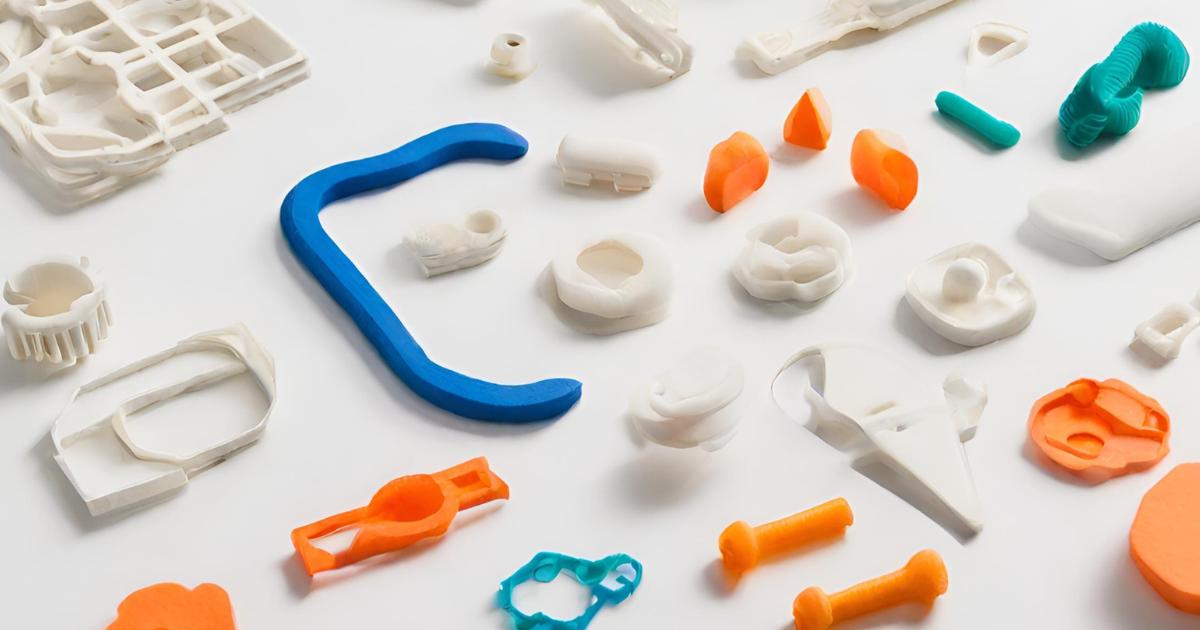In the world of modern medicine, 3D printing has revolutionized the way we create medical devices. This technology offers precision, flexibility, and customization, and the choice of materials plays a pivotal role in the process. If you’re looking to explore the potential of 3D printed medical devices, you’ll want to consider the following five materials for your applications.
Stainless Steel
Stainless steel is a versatile and reliable material that has found a significant place in the world of 3D printing for medical applications. Known for its strength, durability, and resistance to corrosion, stainless steel is often the top choice for implantable devices. It’s widely used in the production of orthopedic implants, dental fixtures, and surgical instruments. The biocompatibility and resistance to body fluids make it the ideal material for ensuring the longevity of these medical tools.
One notable advantage of 3D printing with stainless steel is its ability to create complex and intricate designs. This precision is especially crucial for creating implantable devices that need to fit a patient’s unique anatomy. With the help of 3D printing, the manufacturing process can be highly customized, ensuring that each device perfectly meets the patient’s needs.
Nylon 12-PA
Nylon 12-PA, also known as polyamide, is another versatile 3D printing material that has gained popularity in the field of medical device manufacturing. Its excellent mechanical properties, such as flexibility and impact resistance, make it a suitable choice for custom prosthetics, orthodontic devices, and other patient-specific applications. What sets it apart is its lightweight nature, which ensures patient comfort while still maintaining structural integrity.
Orthopedic braces and prosthetic limbs often require patient-specific customization to provide optimal functionality. Nylon 12-PA is well-suited for these applications due to its versatility and ability to create lightweight yet durable devices. This material has transformed the world of orthopedics, allowing for the creation of comfortable, patient-specific solutions that significantly improve quality of life.
At ADDMAN, we’re proud to offer a unique and cutting-edge material for 3D printing medical devices. Through our Dinsmore business, we provide white Nylon 12-PA using the multi-jet fusion process. This material is not only compliant with medical-grade standards but also unlocks a world of design flexibility for dyeing and post-processing.
White Nylon 12-PA’s compliance with medical standards ensures that the final medical devices meet the rigorous safety and quality requirements of the healthcare industry. Additionally, the white color offers aesthetic advantages and allows for easy dyeing and post-processing, giving manufacturers the freedom to create customized and visually appealing medical devices.
ABS-M30i
ABS-M30i is an FDA-compliant and biocompatible thermoplastic that’s gaining traction in the realm of 3D printed medical devices. This material is ideal for medical device prototyping and production. With its high strength and compatibility with sterilization processes, it has found applications in a wide range of medical devices, from surgical instruments to patient-specific aids.
The stability of ABS-M30i is particularly vital in the demanding environments of medical settings. Surgical instruments, for example, require precision and reliability, and ABS-M30i can deliver both. Its resistance to sterilization processes ensures the safety and hygiene of medical tools, which is paramount in healthcare settings.
BioClear
BioClear, a transparent photopolymer resin, is a game-changer in the world of 3D printed medical devices, opening up a wide range of applications for the healthcare industry. Its exceptional transparency and precision make it ideal for applications where visualization and accuracy are paramount.
In dentistry, for instance, BioClear has transformed the way professionals create dental models and surgical guides. Dentists can now take advantage of the superior clarity and detail that BioClear offers, allowing for precise visualizations of a patient’s oral structure. This breakthrough has led to more accurate diagnoses, customized treatment plans, and improved patient experiences.
Moreover, BioClear is a material that meets the highest standards of safety and quality for medical applications. It is non-bio compatible, with ISO 10993-5 and ISO 10993-10 certifications, ensuring that it poses minimal risk to patients.
Additionally, it carries the USP Class VI certification, confirming its biocompatibility and suitability for medical use. Furthermore, BioClear offers robust tracking and tracing of original suppliers, which is crucial in the medical field for quality control and safety assurance.
Titanium
Titanium is renowned for its strength-to-weight ratio, making it a top choice for various medical applications, including instrumentation. Beyond dental implants, titanium plays a pivotal role in the production of surgical instruments. These instruments require precision, durability, and biocompatibility to perform effectively in medical procedures.
Surgical instruments made from titanium benefit from the material’s lightweight nature, which ensures the comfort of medical professionals during prolonged use. Titanium’s exceptional strength allows for intricate designs, ensuring the instruments can withstand the demands of surgical procedures while maintaining their sharpness and precision.
One notable application is in the production of surgical scissors and forceps. The biocompatibility of titanium minimizes the risk of adverse reactions in patients, and its resistance to corrosion ensures the longevity and hygiene of these critical instruments. 3D printing technology enables the creation of custom, ergonomically designed surgical tools, which can lead to better outcomes and more comfortable experiences for both medical professionals and patients.
3D Printing: Pioneering the Future of Medical Devices
The world of 3D printing for medical devices is rapidly evolving, and the range of materials available is expanding as a result. Stainless steel, nylon 12-PA, ABS-M30i, BioClear, and titanium are just a few examples of the innovative materials being used to develop groundbreaking 3D printed medical devices.
Embracing these materials and the limitless possibilities they offer can lead to customized, precise, and patient-specific medical devices that significantly improve patient outcomes. If you’re considering incorporating 3D printing into your medical device manufacturing process, it’s crucial to explore the potential of these materials and the many other options available in the market.
As 3D printing technology continues to advance, the healthcare industry will undoubtedly see more groundbreaking applications and innovations. Customized solutions, precise medical tools, and better patient outcomes are the promise of 3D printing with these advanced materials.
For more information on 3D printing for medical devices and how ADDMAN Group can assist with your manufacturing needs, visit our medical industry page.

